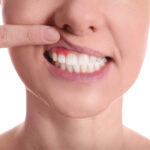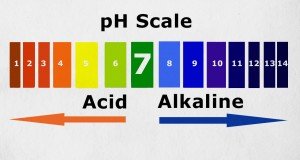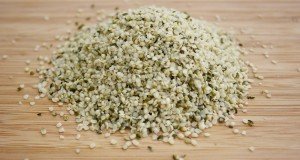Beyond the smile: How gum disease links to cancer
 (Naturalhealth365) Gum disease, or periodontitis, is characterized by inflammation or infection in the tissues of the gums. According to the U.S. Centers for Disease Control and Prevention (CDC), gum disease affects almost half of all people over 30 in the United States. It becomes more widespread as people age – affecting over 70 percent of Americans 65 and over.
(Naturalhealth365) Gum disease, or periodontitis, is characterized by inflammation or infection in the tissues of the gums. According to the U.S. Centers for Disease Control and Prevention (CDC), gum disease affects almost half of all people over 30 in the United States. It becomes more widespread as people age – affecting over 70 percent of Americans 65 and over.
Gum disease results from a number of reasons including the accumulation of plaque, a sticky substance containing harmful bacteria, on the teeth. Scientists have found that some of these bacteria living in our mouths might be connected to cancer development, particularly oral cancer and other types of cancer. One such microbe is Fusobacterium nucleatum, which tends to be more abundant in people with these types of cancers. However, it’s just one of many bacteria that could play a role in causing problems.
Did you know that a gum disease pathogen has been implicated in pancreatic cancer?
In a study published in the British Journal of Cancer, researchers reported that Trepenoma denticola, the bacteria responsible for periodontitis, may also cause pancreatic cancer. As one of the deadliest forms of cancer, pancreatic cancer is expected to claim the lives of over 50,000 people in 2023.
Researchers noted that the Trepenoma bacterium shares a particular enzyme with some cancers found in the gastrointestinal tract. This enzyme, called Treponema denticola chymotrypsin-like proteinase – or Td-CTLP – is usually found in the mouth, where it is known to promote the development of gum disease.
But, it has also been observed in cancerous tumors.
In a destructive chain reaction, Td-CTLP activates still other enzymes – which also promote cancer. These include substances called matrix metalloproteinases, or MMPS, which degrade intercellular material and cell membranes and make it easier for cancer to invade healthy tissue.
The study was the first to show that virulence factors from gum disease bacteria could spread from the mouth to other parts of the body and take part in central mechanisms of cancer-related tissue destruction.
The study was led by Professor Timo Sorsa, who helmed an international team of researchers from the University of Helsinki, Helsinki University Hospital, and the Karolinska Institute in Sweden. Supplementary research, also led by Prof. Sorsa, supported the study’s findings. In a study published in the International Journal of Cancer, researchers evaluated 68,000 participants and found a strong association between gum disease and death by pancreatic cancer.
Periodontal disease is tied to an elevated risk of cancer, especially in mature women
And pancreatic cancer may not be the only cancer spurred on by gum disease. In a study published in Cancer Epidemiology, Biomarkers and Prevention, researchers found that women with gum disease are more likely to develop esophagus, breast, and gallbladder cancers.
The study, which involved over 65,000 women aged 54 to 86, was led by Jean Wactawski-Wende, Ph.D., from the State University of New York at Buffalo.
The team found that having gum disease raised general cancer risk by 14 percent.
And when it came to esophageal cancer, women with gum disease were three times more likely to develop the disease. Researchers believe that this is due to the proximity of the esophagus to the gums, allowing pathogens to infect the esophageal mucosa – thereby promoting cancer.
The study also found that gum disease raised the risk of gallbladder cancer.
Gum disease is linked to diabetes and rheumatoid arthritis
Gum disease can raise the odds of diseases other than cancer. In fact, it often serves as an indicator of prediabetes and diabetes.
In one study, patients with gum disease were found to have higher HbA1c levels – which determine the average blood sugar level in the body for the previous three months.
The bright side is that a gum disease diagnosis can be a tip-off to diabetes. This can lead to early treatment – which in turn can help ward off devastating diabetes consequences such as high blood pressure, cataracts, and heart disease.
People with gum disease also have a higher risk of developing rheumatoid arthritis – a chronic degenerative autoimmune disease in which tissues around the joints are attacked by the body’s own immune system.
Studies have shown that patients with more severe gum disease also tend to have more severe RA. Patients with gum disease that led to loss of jawbone also had RA-associated bone erosion in their joints.
And – just as with the pancreatic cancer research – the team found that gum disease bacteria could appear in other parts of the body. In a review published in Current Opinion in Rheumatology, researchers found the primary pathogen that causes gum disease in both gum tissue and the synovial fluid of RA patients.
Fortunately, gum disease treatment can cut the body’s inflammatory burden and improve both conditions at once.
Take a holistic approach to oral health
Maintaining oral health through natural tips involves taking steps to keep your mouth clean and healthy without relying solely on commercial dental products. Here are some natural tips for oral health:
Proper brushing and flossing: Brush your teeth at least twice a day using a soft-bristle toothbrush using fluoride-free or natural toothpaste. Floss daily to remove unwanted food particles between your teeth.
Oil pulling: Try oil pulling with coconut oil. Swish a tablespoon of coconut oil in your mouth for 15-20 minutes before spitting it out in the garbage pail. This can help remove harmful bacteria.
Natural mouthwash: Rinse your mouth with a homemade mouthwash using warm water and a pinch of salt or baking soda. It can help neutralize acids and bacteria. Herbal mouthwashes with ingredients like tea tree oil or peppermint oil can also be effective.
Dietary choices: Limit sugary and acidic foods and beverages as they contribute to tooth decay. Consume a diet rich in fruits and vegetables, particularly crunchy ones like apples and carrots, that can naturally clean your teeth.
Hydration: Drink plenty of clean water to help maintain a moist mouth and flush away food particles and bacteria.
Tongue cleaning: Gently scrape your tongue with a tongue scraper or the back of a spoon to remove bacteria and debris.
Regular dental checkups: See a holistic or biological dentist for regular checkups and cleanings to catch and address any issues early.
The takeaway: These studies – which show that the low-grade systemic infection and inflammation of periodontitis can facilitate the spread of bacteria throughout the body – spotlight the importance of oral health. As Prof. Sorsa reports, preventing oral diseases may also mean preventing more serious health outcomes – including cancer.
Editor’s note: To learn more about how to effectively eliminate the threat of gum disease plus many other oral health problems, own the Holistic Oral Health Summit – created by NaturalHealth365 Programs.
Sources for this article include:
NIH.gov
Cancer.org
MedicalNewsToday.com
MedicalNewsToday.com
ScienceDaily.com
CDC.gov











